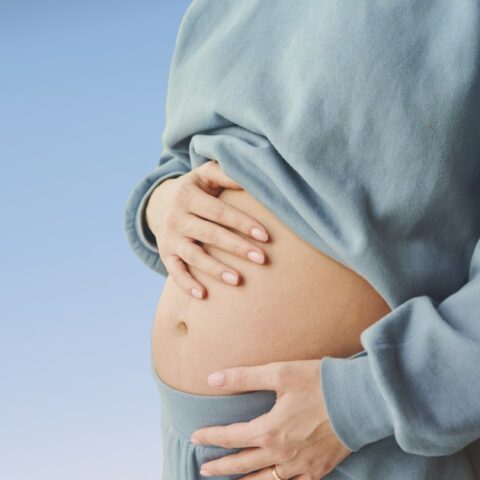Pregnancy Pilates is a fantastic way to maintain a healthy lifestyle during pregnancy. Still, it’s crucial to know which movements are safe and which to avoid to prevent undue stress on your body.
Table of contents
The physiology of pregnancy alters your balance. It puts extra strain on your back, abdominals, and pelvis. This makes some movements uncomfortable or unsafe when working out. So, while Pilates can be beneficial, some exercises might be too risky for those expecting.
To practice Pilates during pregnancy, it’s important to understand these changes. Listen to your body and adjust exercises for a safe prenatal Pilates workout.
Key takeaways
- Practicing Pilates while pregnant can be beneficial, but some exercises may pose risks.
- Understanding changes during pregnancy is crucial for a safe Pilates practice.
- Focus on safety by avoiding certain movements and opting for modified versions.
Safe practices for prenatal Pilates
Prenatal Pilates sessions can reduce stress. They can also strengthen the pelvic floor and keep your entire body strong. Still, it’s important to adhere to safe practices.
When engaging in Pregnancy Pilates, focus on low-impact exercises.
Key considerations for your routine
- Mind your intensity: A moderate intensity in low-impact exercise is key. Avoid overexerting yourself. Ensure you can still hold a conversation during your workout.
- Be aware of your clothing: Wear clothing that supports a full range of motion.
- Breathe: Deep breathing exercises help improve oxygen flow, reduce stress, and enhance relaxation.
- Core exercises: Practice safe exercises that activate core muscles without causing strain.
Why you should avoid certain movements
Movements that might have been beneficial before pregnancy can now pose risks. Especially as you experience changes to your internal systems, balance, posture, ligaments, and stability.
Overheating
During the first trimester, blood flow increases. This affects your blood pressure and body temperature and can lead to overheating during exercise. A low-impact Pregnancy Pilates workout will be ideal during this time.
Abdominal muscles
One of the most noticeable changes will be a growing belly with increased weight gain. This stretching of the front body can weaken and tighten the back muscles and change the support coming from your core muscles. Avoid exercise that causes excessive strain on the superficial abdominal muscles.
Pelvic floor muscles
Your pelvic floor muscles support your uterus and can become strained as the fetus grows. Strengthening them can help manage some of the physical challenges of pregnancy.
Balance and overextending joints
In the second and third trimesters, your center of gravity shifts. This increases the risk of strain on your back and pelvis. Hormonal changes also loosen joints, which can allow you to overextend the joints. Avoid overstretching or risky stability exercises. They challenge your balance too much and place undue pressure on your abdomen.
Respecting these changes to your body is key to practicing pregnancy Pilates. It’s crucial to adapt your exercise routine to these changes. This will help maintain a healthy and comfortable pregnancy experience.
Pilates exercises pregnant people should avoid
You should approach your Pilates workout with more caution during the prenatal period. Some poses may not be safe across the different stages of pregnancy. Here, we’ll discuss what you should avoid during each trimester.
Pilates in the first trimester
- First trimester: Focus on maintaining your exercise habits with Pilates during pregnancy. There’s no need to push for new personal bests.
During your first trimester, your regular movements may still feel very comfortable. They should be safe early on.
As the first trimester progresses, avoid abdominal exercises that involve significant abdominal pressure. These movements can put too much strain on your midsection. Your body starts producing a hormone called relaxin as early as six weeks. This hormone loosens the joints and ligaments making it important not to over stretch. Listen to your body and get comfortable with not pushing yourself.
Avoid:
- Intense core workouts
- Over stretching especially the hips and pelvic area
Pilates in the second trimester
- Second and third trimester: Adapt safe exercise to accommodate your changing body.
Lying on your back can increase pressure on your blood vessels, reducing blood flow to your baby so avoid supine positions for extended periods of time.
Avoid prone exercises that place direct pressure on your belly as well.
At this stage, your usual Pilates Mat or Pilates Reformer exercises may become too hard or unsafe. You may want to make the switch to a prenatal Pilates class.
Avoid:
- All prone positions
- Prolonged supine positions
- Abdominal crunches and flexion based abdominal exercises
- Overstretching
Pilates in the third trimester
- Third trimester: Incorporate a focus on breathing, stretching, and gentle movement.
Continue to avoid prone, supine, and strong flexion-based core work. Also, be more cautious with movements that challenge your balance.
Remember that Mat and Reformer Pilates often include lying positions and core exercises. These put too much pressure on your core and pelvic floor at this stage. It’s also safe to avoid the hot and humid conditions found in hot Pilates classes. These classes can lead to overheating and dehydration.
Consider prenatal-focused Mat or Reformer Pilates classes for your safety and well-being.
Avoid:
- Balance-challenging moves without support
- High-temperature Pilates environments
- Deep stretches
- Strong abdominal exercises
- Supine and prone positions
Following pregnancy guidelines for exercise will help maintain your safety. While you can modify and enjoy most Pilates exercises, it is important to avoid those that:
- Place significant load on the abdomen.
- Involve lying on your back after the first trimester.
- Involve jumping, hopping, or bouncing motions.
- Pose a high risk of falling or abdominal injury.
Remember, your ever-changing pregnant body requires a tailored approach to Pilates and other exercises.
Modifying mat and reformer Pilates for a safe practice
When engaging in Pilates during pregnancy, it’s crucial to modify your routine. Remember that you can adjust all your Mat Pilates and Reformer Pilates exercises. This will help you maintain your practice safely and effectively. Pilates can help strengthen muscles and support a healthy delivery. However, the movements should be done with care during pregnancy.
Pregnancy Pilates classes online
With online platforms like BAY STUDIOS+, you can work out from the comfort of your home. Maintain strength and well-being with a library of prenatal classes at your fingertips.
We tailor each pregnancy Pilates class for safe and effective workouts during pregnancy. And a certified Pilates instructor leads you through each movement. This way, you can start exercising in a way that best supports your pregnancy.
Conclusion: Balancing Pilates and pregnancy
Practising Pilates during pregnancy is a great option for maintaining your health. It can help you prioritize exercise and support your body and mind.
Avoid exercises that:
- Involve significant strain or load of the superficial abdomen
- Place undue pressure on the pelvic floor
- Involve lying flat on your stomach or back after the first trimester
- Stretch the ligaments and joints
Instead, focus on:
- Strengthening and releasing pelvic floor and deep abdominal muscles: Beneficial for childbirth and the postpartum period.
- Enhancing postural alignment: As your center of gravity shifts, it’s important to keep the back of the body strong and glutes active.
- Listening to your body: If any exercise feels uncomfortable, stop immediately.
- Staying hydrated: Drink plenty of water before, during, and after your Pilates workouts.
Remember, some Pilates exercises will need modification. This is important so that movements suit your evolving body during pregnancy. Seek guidance from certified instructors and prenatal classes in person or online.
Always ask your healthcare provider before starting any new exercise during pregnancy. They can ensure it’s safe for you and your baby. With the right approach, Pilates can be an excellent tool. It will keep you strong and balanced as you prepare for childbirth and beyond.
Frequently asked questions
What core Pilates movements should be avoided to ensure safe pregnancy workouts?
Avoid traditional crunches, deep twists, and intense backbends. Opt for Pilates movements that support the transverse abdominis and minimize diastasis recti risk.
Where can I find resources or guides for safe Pilates practice during pregnancy?
Consult with qualified Pilates instructors who specialize in prenatal routines. Alternatively, rely on online resources like BAY STUDIOS+. They have specific prenatal Pilates videos with detailed instruction for pregnant people.
Are there any Pilates movements that are safe throughout the entire pregnancy?
Many Pilates movements are safe for pregnancy. There are also plenty of options to modify the movements. We’ve created a comprehensive guide to lead you through the dos and don’ts of pregnancy Pilates to ensure a safe experience.
Which Pilates class types are safest during pregnancy?
Mat Pilates, Reformer Pilates, and other equipment-based Pilates classes are safe during pregnancy. Still, many exercises require lying on the stomach or back. They can also focus on building abdominal strength. So, prenatal classes or modified classes for pregnant people will be safest.
Are there any Pilates equipment or accessories I should avoid during pregnancy?
Keep in mind that equipment-based classes require movements on an elevated surface. Also, classes like Reformer Pilates are done on the sliding surface of a Pilates Reformer machine. So, be sure to take extra care with your balance when moving with these machines.




